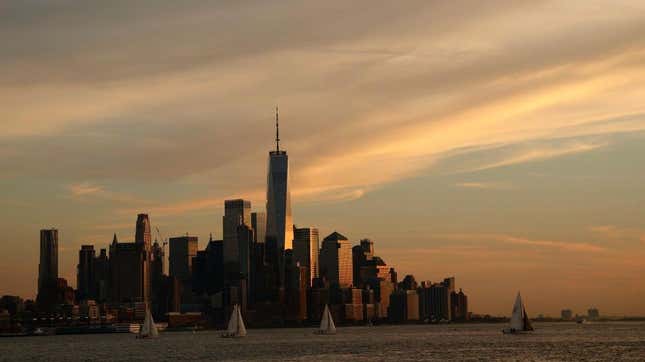
The climate crisis is making weather unpredictable. It’s hotter for longer and we’re seeing extreme precipitation changes. New research shows that, if we don’t lower emissions, climate change is going to boost water and power demand for cities facing these weather changes.
In a study published yesterday in the journal One Earth, scientists estimated how water and electricity usage will change by 2080 under scenarios of high emissions, comparing future consumption to current levels. They found that, within the next 60 years, several U.S. cities could see their water and electricity needs rise by over 10%.
To calculate this, study authors gathered observational climate data along with water and electricity use data from utility companies from 2007 to 2018, for a total of 46 cities. The cities, dispersed throughout the continental U.S., have populations greater than 250,000 and include New York, Chicago, Los Angeles, Boston, Sacramento, San Francisco, and Phoenix. That information was used to train climate models to understand how much water and power use would change per capita in the cities studied. They found that most of the 46 cities, especially the largest, are likely to experience an increase in electricity demand by 2080. New York, Chicago, and Los Angeles are especially going to see demand increase anywhere from 6% to 12% per capita during summer months.
New York and Los Angeles are not likely to see much of an increase in water demand per capita. The scientists behind the study said that is because there is less demand for individual recreational water use and for landscaping compared to the average household in other cities.
The researchers also used something called “climate analogs.” It’s a method that uses the current climate of an existing location to portray how the climate of another location may look like in the future. For example, based on results from the climate models, New York City’s future climate could become similar to that of Jonesboro, Arkansas, around the year 2080 in a high emissions scenario. Located farther south than New York, Jonesboro is likely to experience an increase in power usage as average temperatures continue to rise.
Study author Renee Obringer was surprised to see that some cities, especially those around the Gulf, were forecast to see a reduction in need for electricity and power. For example, in the study, Tampa, Florida, is paired with Ciudad Mante in Mexico as its climate analog. That city receives more precipitation in the summer, leading to the study’s prediction that a shift in Tampa’s climate to more closely resemble that region of Mexico could result in water demand decreasing by just under 10%. This could be because outdoor water use might decrease during summer months if the region sees more rain.
Obringer explained that the use of climate analogs simplifies the process of interpreting data obtained from climate models, making the information more accessible for researchers. “Our local water utility manager might not have any idea about how to get this data or how to use it or interpret it,” she told Earther. “By using the analogs themselves, we were able to get that indirect effect of future climate without having to go through the process of downloading and downscaling these giant models.”
Using analogs as comparisons will also make it easier for elected officials and planning agencies to better mitigate energy and water demand per capita, and for population growth. Not accounting for these changes could mean unequal access to power and water. “To mitigate these potential impacts, it is critical to build resilient infrastructure that can handle the climate-induced demand increases,” the report advised.
But it will be a challenge to meet the rising energy demands, especially as many of the cities listed are projected to become warmer. For example, Los Angeles currently requires 5.4 million megawatt hours of power. In a high emissions scenario, the city will need more than 9 million MWh to account for increased energy demand, the study said. Obringer said that this would mean several thousand more wind turbines in order to account for that increase in energy demand for one of the major cities.
“We wanted to bring to light that it’s not just that we’re looking at a 15% increase in electricity demand,” she said. “This has really big implications for how we plan and manage our grid.”
The increases mentioned in the study represent likely overall average changes. However, this doesn’t account for demand during longtime droughts or intense heat waves—two things that are affected by climate change.
“These events put a strain on the infrastructure systems, with managers and operators often resorting to conservation mandates or, in the case of the electric grid, rolling blackouts,” study authors wrote. “Vulnerable groups, such as lower-income families, the elderly, or racially/ethnically marginalized people, experience more extreme impacts during heatwaves, leading to public health crises.”
Want more climate and environment stories? Check out Earther’s guides to decarbonizing your home, divesting from fossil fuels, packing a disaster go bag, and overcoming climate dread. And don’t miss our coverage of the latest IEA report on clean energy, the future of carbon dioxide removal, and the invasive plants you should rip to shreds.